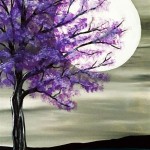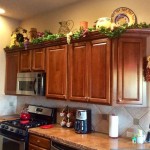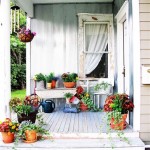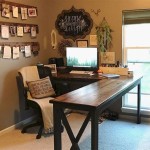```html
1960s Decorating Ideas: A Retro Revival
The 1960s was a decade of dramatic change, and this societal upheaval was clearly reflected in interior design. Characterized by bold colors, geometric patterns, and a futuristic optimism, 1960s decorating moved away from the more restrained styles of the previous decade. It embraced new materials, embraced pop culture, and sought to create spaces that were both vibrant and functional. Understanding the core elements of this design aesthetic allows for a successful incorporation of 1960s elements into modern homes, whether aiming for a complete retro revival or simply a touch of vintage flair.
Key Point 1: Embracing Bold Colors and Patterns
Color was undoubtedly the defining feature of 1960s interiors. The palette shifted from the pastels of the 1950s to a spectrum of vivid hues including avocado green, harvest gold, sunshine yellow, bright orange, and shocking pink. These colors were often used in combination, creating striking contrasts and visually stimulating spaces. Walls might be painted in a solid, saturated color, or feature wallpaper with large-scale geometric patterns, floral designs, or abstract motifs. Psychedelic patterns also emerged later in the decade, reflecting the counter-cultural movement.
The use of color extended beyond walls and wallpaper. Furniture, textiles, and accessories were all opportunities to inject bold splashes of color into the room. Think bright orange sofas, yellow armchairs, and geometric patterned rugs. The key was to avoid subtlety and embrace a maximalist approach to color application.
Pattern played a crucial role in defining the 1960s aesthetic. Geometric shapes such as squares, circles, triangles, and diamonds were prevalent, often repeated in bold, contrasting colors. These patterns appeared on wallpaper, upholstery, curtains, and even carpets. Floral patterns, particularly stylized flower motifs, were also popular, often incorporating the decade's signature bright colors. The overall effect was one of energy and visual interest, reflecting the optimism and excitement of the era.
Incorporating this aspect into contemporary design involves carefully considering color balance. Overdoing the bold hues can create a space that feels overwhelming. Pairing a few key bright elements with neutral backgrounds, like white or gray walls, allows the colors to pop without becoming visually chaotic. Similarly, choosing one or two geometric patterns and using them sparingly can add a touch of 1960s flair without dominating the room.
Furthermore, the way light interacts with color should be considered. The glossy surfaces prevalent in 1960s furniture and accessories reflected light, enhancing the vibrancy of the colors. Matte finishes, while more common in modern design, can mute the impact of these bold hues. Integrating appropriate lighting, such as strategically placed lamps or spotlights, can help to maximize the visual impact of the chosen color scheme.
Key Point 2: The Rise of New Materials and Furniture Styles
The 1960s saw the introduction and widespread adoption of new materials in furniture design. Plastics, particularly molded plastic, became incredibly popular due to their affordability, versatility, and ability to be shaped into organic, futuristic forms. Furniture made from fiberglass, acrylic, and chrome also became increasingly common. These materials allowed for the creation of sleek, modern designs that were a departure from the heavier, more traditional furniture of previous decades.
The furniture styles of the 1960s were diverse, ranging from minimalist Scandinavian-influenced designs to more flamboyant, space-age inspired pieces. Low-slung sofas, often upholstered in brightly colored vinyl or textured fabrics, were a common feature. Chairs with molded plastic shells, often mounted on chrome or wooden legs, were also prevalent. Coffee tables made from glass or acrylic were popular choices, as were side tables with sleek, geometric forms.
Modular furniture gained prominence in the 1960s. These versatile pieces could be arranged and reconfigured to suit different needs and spaces. Sectional sofas, shelving units, and storage systems were all available in modular designs, allowing homeowners to customize their living spaces. This flexibility aligned with the decade's emphasis on functionality and adaptability.
Integrating these materials into a contemporary setting requires careful consideration of the overall aesthetic. While a full room filled with molded plastic furniture might feel overwhelming, incorporating a few key pieces can add a touch of retro charm. A statement chair made from acrylic or fiberglass, for example, can serve as a focal point in a modern living room. Mixing these materials with more traditional elements, such as wooden furniture or natural textiles, can create a balanced and visually appealing space.
When considering furniture styles, opting for pieces with clean lines and simple shapes is often a safe bet. Low-slung sofas with minimalist designs can be easily incorporated into a variety of decorating styles. Choosing furniture with legs made from chrome or wood adds a touch of mid-century modern flair without being overly retro. The key is to select pieces that complement the existing décor and add a subtle nod to the 1960s.
Finding authentic vintage pieces can be a rewarding experience, but it's essential to inspect them carefully for signs of wear and tear. Upholstery may need to be replaced, and structural issues may need to be addressed. Alternatively, many contemporary furniture manufacturers offer reproductions of classic 1960s designs, providing a convenient way to achieve the desired look without the challenges of restoring vintage furniture.
Key Point 3: Incorporating Accessories and Lighting
Accessories played a vital role in completing the 1960s interior. Pop art prints, abstract paintings, and colorful wall hangings added visual interest and reflected the decade's artistic trends. Decorative objects made from plastic, ceramic, or glass were also popular, often featuring bold colors and geometric shapes. Lava lamps, beanbag chairs, and shag rugs became iconic symbols of the era, adding a touch of whimsy and informality to the home.
Lighting fixtures in the 1960s were often characterized by their futuristic designs and use of modern materials. Sputnik chandeliers, with their radiating arms and exposed bulbs, were a popular choice, as were pendant lights with colorful glass shades. Table lamps with sculptural bases and geometric shades added ambient light to living rooms and bedrooms. The emphasis was on creating a bright and inviting atmosphere.
Textiles played a significant role in adding texture and pattern to 1960s interiors. Shag rugs, with their long, shaggy fibers, were a defining feature of the decade. Curtains with bold geometric patterns or floral designs added privacy and visual interest to windows. Throws and cushions in brightly colored fabrics were used to enhance the comfort and style of sofas and chairs.
When incorporating accessories into a contemporary space, it's important to avoid overwhelming the room. Choosing a few key pieces that reflect the 1960s aesthetic can be more effective than trying to recreate a fully retro environment. A single pop art print, a vintage lava lamp, or a brightly colored ceramic vase can add a touch of personality and visual interest without dominating the space.
Lighting is a crucial element in any room, and selecting appropriate fixtures can greatly enhance the overall aesthetic. A Sputnik chandelier can be a striking focal point in a dining room or living room. Pendant lights with colorful glass shades can add a touch of retro charm to a kitchen or hallway. Table lamps with sculptural bases can provide ambient light and add a touch of sophistication to a bedroom or study.
Textiles offer an easy and affordable way to incorporate 1960s elements into a modern home. A shag rug can add texture and warmth to a living room or bedroom. Curtains with geometric patterns can add privacy and visual interest to any room. Throws and cushions in brightly colored fabrics can be used to add pops of color to sofas and chairs. The key is to choose textiles that complement the existing décor and add a subtle nod to the 1960s aesthetic.
```
Hippie Decor More 1960s Interior Design Ideas 15 Pages Of Rooms From 1969 Retro Renovation

Trend Watch 60s Influenced Style Fads Blogfads Blog

17 Groovy Home Interiors From 1965 Retro Renovation

36 Fun Retro Ideas For Kids Room Decor With Real 60s Style Americana

60s Decor Design Fashion 2 Warps To Neptune Page 4

36 Fun Retro Ideas For Kids Room Decor With Real 60s Style Americana

18 New Vintage 60s Bedroom Decor Ideas That Aren T Boring To Date Dwell Stylist

36 Fun Retro Ideas For Kids Room Decor With Real 60s Style Americana

18 New Vintage 60s Bedroom Decor Ideas That Aren T Boring To Date Dwell Stylist

Interior Home Decor Of The 1960s Ultra Swank
Related Posts







